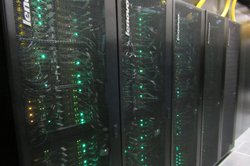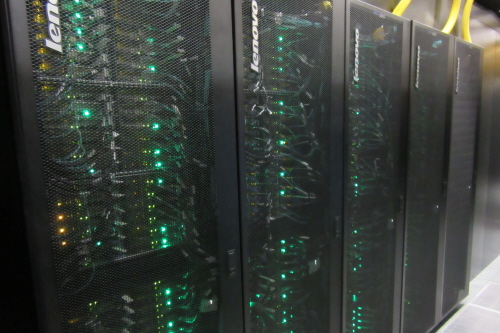
May 30, 2017
By: Michael Feldman
The University of Bristol’s newest supercomputer, Blue Crystal 4 (BC4), is three times faster than its predecessor and promises to accelerate the work of more than 1,000 researchers and engineers.
 Targeted for applications in paleobiology, biochemistry, physics, molecular modeling, life sciences, and aerospace engineering, BC4 will provide 602 peak teraflops of raw computing horsepower. Early testing indicates application performance for simulations and advanced analytics in these domains has trebled compared to its older sibling, Blue Crystal Phase 3.
Targeted for applications in paleobiology, biochemistry, physics, molecular modeling, life sciences, and aerospace engineering, BC4 will provide 602 peak teraflops of raw computing horsepower. Early testing indicates application performance for simulations and advanced analytics in these domains has trebled compared to its older sibling, Blue Crystal Phase 3.
According to Dr. Christopher Woods, EPSRC Research Software Engineer Fellow at the University of Bristol, “research that used to take a month, now takes a week, and what took a week, now takes only a few hours.”
"We have researchers looking at whole-planet modeling with the aim of trying to understand the earth's climate, climate change and how that’s going to evolve, as well as others looking at rotary blade design for helicopters, the mutation of genes, the spread of disease and where diseases come from,” he added.
The new system was also used to support a €1.8 million study looking into the evolution of the Ebola virus, and how it’s impacting diagnostics and treatment. Dr. David Matthews, Senior Lecturer in Virology at the University of Bristol, who led the Bristol component of the study noted that Blue Crystal was a critical tool for that research.
“We used it to analyze raw data on the Ebola virus in 179 patient blood samples to determine the precise genetic make-up of the virus in each case,” he said. “This allowed the team to examine how the virus evolved over the previous year, informing public health policy in key areas such as diagnostic testing, vaccine deployment and experimental treatment options."
BC4 is a Lenovo NeXtscale cluster powered principally by 14-core Intel “Broadwell” Xeon processors. Each node is equipped with two of these processors, along with 128 GB of memory. The system also has 32 GPU-accelerated nodes, each of which includes two NVIDIA P100 Tesla processors. A visualization node equipped with NVIDIA Grid vGPUs is provided as well. Inter-node connectivity is supplied by Intel’s Omni-Path fabric, running at 100 Gbps.
The plan is to replicate applications running on the older Blue Crystal machine on BC4 in order to allow researchers to scale up their codes, as well as develop new ones. Due to the similarity in architecture, applications are expected to migrate easily.
BC4 was installed in 2016 and is currently ranked 301 on the TOP500 list. It was officially launched at a special symposium in Bristol on May 24, 2017.
